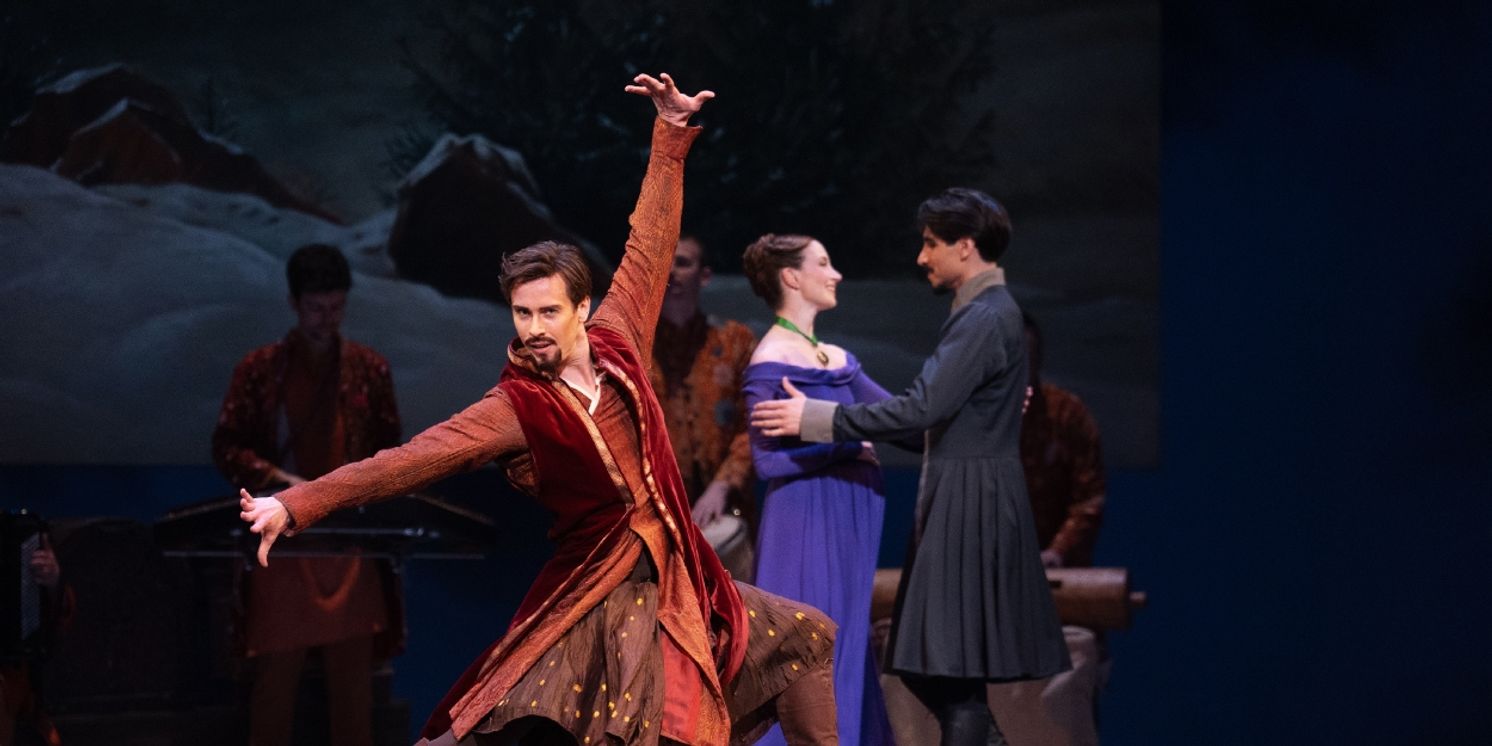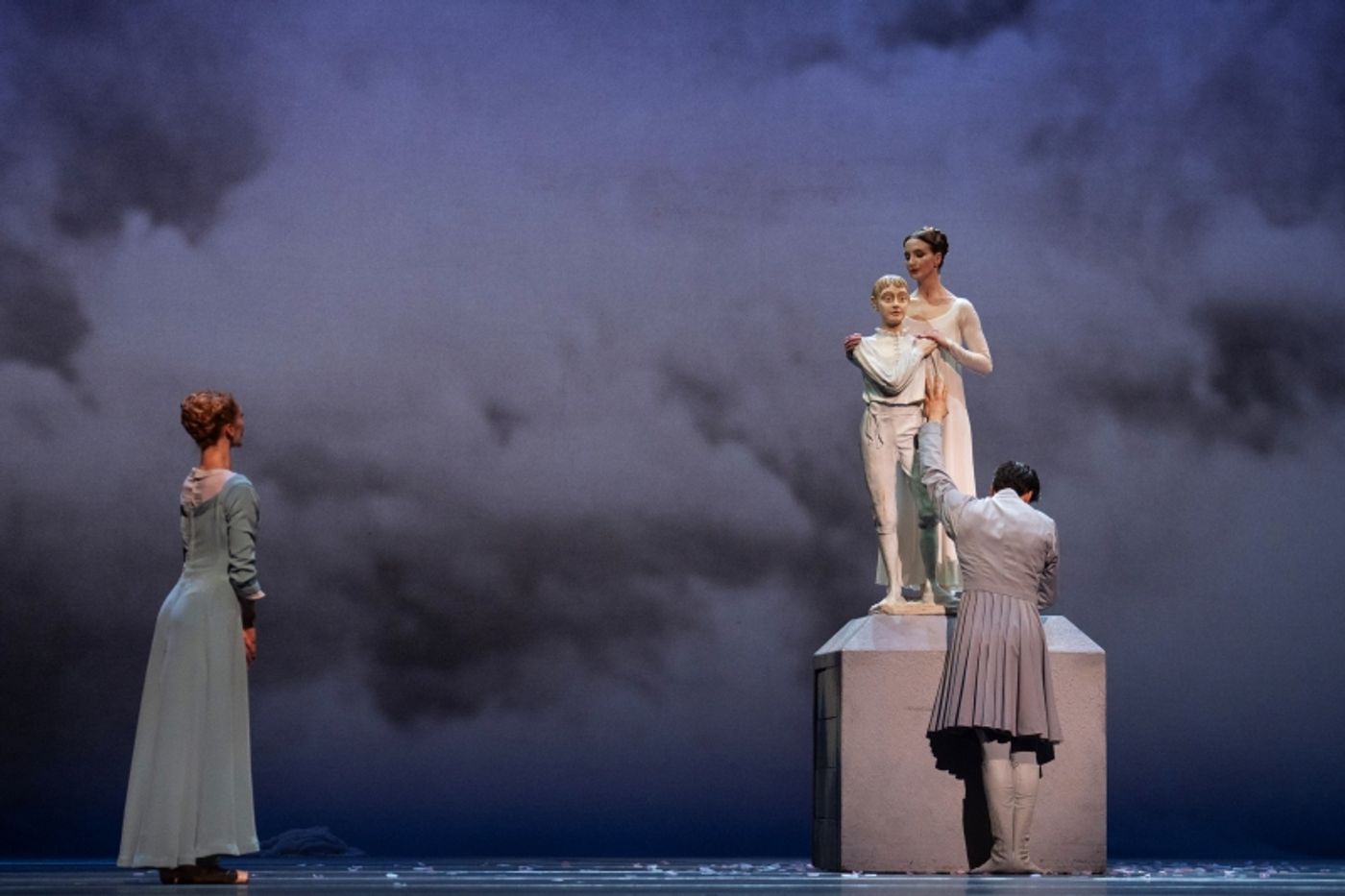Review: THE WINTER'S TALE, Royal Opera House
The Royal Ballet's award-winning take on a Shakespeare "problem play" returns for its 10th anniversary.

![]() Part violent psychodrama, part sunny romcom, The Winter’s Tale was not the most obvious of plays for The Royal Ballet to take on.
Part violent psychodrama, part sunny romcom, The Winter’s Tale was not the most obvious of plays for The Royal Ballet to take on.
This is the first show since the company announced a name change and demonstrates why, regardless of what its moniker happens to be, it is still a global brand leader. When this ballet debuted almost exactly a decade ago, Christopher Wheeldon’s version with music by Joby Talbot was the first full-length adaptation of a Shakespeare play by the organisation since Kenneth MacMillan’s 1965 production of Romeo and Juliet. Why they left it almost fifty years to bring another of the Bard’s works to the stage is a mystery, as is why they picked one of his infamous “problem plays”.
.jpg?format=auto&width=1400)
The story initially revolves around King Leontes of Sicily. For some months, his childhood friend Polixenes, King of Bohemia has been visiting him and his pregnant wife Hermione. He wrongly suspects that the two have been having an affair and, in a fit of rage, attacks his friend and attempts to have him poisoned by his courtier Camillo. Polixenes and Camillo flee back to Bohemia while Leontes turns his attention to his wife and tries to have her executed for treason.
In some of the darkest moments of any Shakespeare play, Leontes’ young son Mamillius dies, Leontes learns that his wife has died giving birth then, after seeing his newborn daughter, demands that another courtier Antigonus take the baby away and abandon it. Antigonus leaves the baby on the shore of Bohemia before he suffers a sad fate described by one of the most famous stage directions of all time: “Exit, pursued by a bear.”
The second act jumps forward sixteen years and switches from night to day both in a literal and metaphorical sense. The grown up babe goes by the name Perdita and is being courted by Polixenes' son Prince Florizel, who is disguised as a shepherd. A final act brings closure with the couple becoming betrothedLeontes reconciling with what remains of his family.
.jpg?format=auto&width=1400)
This is the fourth revival of The Winters Tale. In that time, it has been put on by original co-producers National Ballet of Canada, the Bolshoi Ballet and Hamburg Ballet and will be part of the Vienna State Ballet’s next season. Its debut London run won international praise and led to a UK National Dance award and Wheeldon’s second Benois de la Dance award for best choreography.
No doubt part of this ballet’s international appeal lies in the stark tonal duality as it sharply moves from one end of the emotional spectrum to the other (something that Natasha Katz’s lighting design is utterly vital in portraying). Its schizophrenic nature allows Wheeldon and Talbot licence to explore two very different artistic palettes with equally successful results: backed by persuasive acting and direction, the music and dance superbly take us into the monstrous thoughts of Leontes before lifting us onto a much sunnier plane as we witness the blossoming love between Perdita and Florizel. Talbot is a master of evoking mental states; as he showed in his later work Everest, he is very capable when it comes to externalising the most complex inner torments and dreams.

Four different casts will be deployed in this latest run with the first night seeing Principal Cesar Corrales take on Leontes and his real-life partner Francesca Hayward play his daughter Perdita. The Cuban-Canadian is marvellously convincing in a role which sees his malevolent character go from deep jealousy into shocking violence and then a poignant redemption. The glint of silver as he threatens Calvin Richardson’s Polixenes with a knife is matched by the determined anger in his eyes. Seeing him lift Lauren Cuthbertson’s Hermione over his head or drag her around the stage, it’s a surprise that there was no recurrence of the booing heard during the infamous 2015 run of Guillaume Tell.
Another winning aspect is Bob Crowley's visual stylings; the very different sets for the first and second act are dazzling affairs, immediately immersing us into their respective locations . Daniel Brodie’s full-size projections bring to vivid life the sea journeys while My Neighbour Totoro’s Basil Twist adds some wonderful silk effects. Although the bear is seen only in a fleeting glimpse (a more gory finale for Antigonus would absolutely not have been out of step with the first act), the heartbreakingly bittersweet ending which brings together the talents of Wheeldon, Talbot and Katz is probably as good as it gets.
The Winter’s Tale continues at The Royal Opera House until 1 June.
Photo credit: Andrej Uspenski
Reader Reviews
Videos

